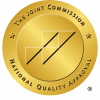
History of Medical Discoveries: From 1700 to 1900
By: Dakota Behrman
A few times a century, there are advances and discoveries in the medical field that propel humankind forward. Moments in history that are so monumental, our influence on the trajectory as a species can be plainly observed. Landmark discoveries extending the life expectancy of humans or technology are changing the face of the medical landscape. Among this list are discoveries that revolutionized health and medicine, assisting humankind in the fight against disease, and illness, and thwarting death.
1796 – Vaccinations
For centuries, smallpox was a dominant infectious disease, taking more than 500 million lives over its history (NCBI.NLM.NIH). It was prevalent in all parts of the world, causing the death of every three in 10 people (CDC). It is believed that smallpox first developed around 10,000 BC. Skin lesions resembling smallpox have been found on the faces of mummified humans, dating back to Egypt 1570 – 1085 BC (NCBI.NLM.NIH). In the 18th century, English doctor, Edward Jenner, observed those who were exposed to cowpox had a resistance or immunity against smallpox. This concept was not unheard of at the time, as many had heard tales of dairymaids having a greater degree of protection against smallpox. Thus, Jenner realized that purposefully transmitting cowpox to an individual as a protective measure against the more serious smallpox may be viable (NCBI.NLM.NIH).
As an experiment, he exposed the child of his gardener, a 9-year-old boy, to scrapped pus of a person infected with cowpox. The child developed symptoms and recovered, then six weeks later was exposed to smallpox with no surfacing symptoms. The child was repeatedly exposed twenty more times without ever developing smallpox (NCBI.NLM.NIH). This method would become the basis for vaccine inoculation and lead to the global annihilation of the smallpox virus, ending its reign of death after centuries of wreaking havoc. On May 8th, 1980, the World Health Assembly would declare smallpox eradicated:
“The world and all its people have won freedom from smallpox, which was the most devastating disease sweeping in epidemic form through many countries since earliest times, leaving death, blindness, and disfigurement in its wake.” (World Health Organization)
1861 – Germ Theory
On the streets of London, England in 1854, hundreds of people were falling victim to the worldwide cholera pandemic. At the time, scientists believed infection spread through what was known as the Miasma theory: disease spawning spontaneously in the air, causing illness to those exposed (UCLA). One skeptic of this theory was English physician, John Snow, who discounted the idea that the outbreak was caused by foul air and decay. By talking to those affected, he was able to trace and track the infection to a common point: the local public water pump. He concluded that the drinking water had been contaminated, leading to an overhaul of the communities’ practices in handling their water supply.
However, the Miasma theory had not been fully debunked and was still regarded as the best leading cause of disease. It was not until French microbiologist, Louis Pasteur, whose experiments proved that infectious diseases developed through microscopic organisms entering living hosts. Pasteur created a system in which a flask of boiled water had a filter present, preventing particles in the air from being exposed to the liquid inside. On the opposing end, he had a flask of boiled water fully exposed to the air. Pasteur discovered that the flask exposed to air particles lead to the formation of bacteria growth, in comparison, the filtered flask remained sterile (Immunology). This proved that bacteria growth occurs when contaminated pathogens encounter an organism source, ultimately infecting itself.
Understanding how illnesses develop was a vital step in preventing the full-scale spreading of disease. This led to the implementation of hygiene practices, specifically in hospital settings, that resulted in safer environments.
1895 – X-Rays
Wilhelm Röntgen was experimenting with various vacuum tubes on different types of rays, specifically Cathode rays when he accidentally discovered an entirely new type of ray (The Nobel Prize). After realizing Cathode rays could travel through thin pieces of aluminum, Röntgen began tinkering with his setup, leading him to discover how rays traveling through objects leave a green glow on an item on the other side (APS). He coined these as “X-Rays,” the letter “X” as an indication of the unknown (NCBI.NLM.NIH). This prompted Röntgen to shoot X-rays at his wife’s hand. The rays were blocked by the bones, traveling through imprinted an image on the plate, revealing a skeletal outline of her hand (APS).
This development swept through the scientific community. Practical applications accelerated the development of better medical imaging. In 1967, the invention of CT scans utilized X-rays to create cross-sectional images of various blood vessels, soft tissues, and bones. In 1973, CT scans were built upon even further with the invention of MRIs. The ability to see things hidden within our bodies led to the early detection of diseases, disorders, and cancers, saving the lives of countless people.
These are some of the historic discoveries that advanced medicine and contributed to the prolonging of human life. Looking back, it’s hard not to be amazed at the growth of the profession and the speed at which that progression happens. Stay tuned for our second part of this blog where we dive into some medical discoveries starting in the 1900s!
Interested in contributing to the Krucial Kollective? Send us an e-mail at marketing@krucialrr.org and let us know what you would like to write!
A few times a century, there are advances and discoveries in the medical field that propel humankind forward.




